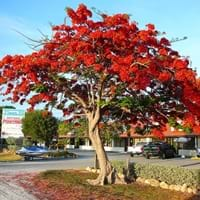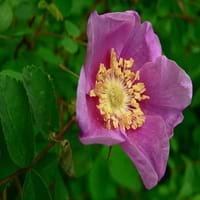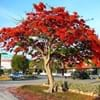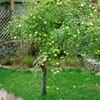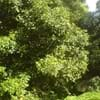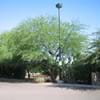Life Span
Perennial
Perennial
Type
Flowering Plants, Tree
Flowering Plants
Origin
Not Available
Canada
Types
Not Available
Not Available
Habitat
old gardens
coastal environs, Deciduous forests, Fields
USDA Hardiness Zone
10-11
8-14
AHS Heat Zone
Not Available
12-10
Sunset Zone
Not Available
H1, H2, 4, 5, 6, 7, 8, 9, 10, 11, 12, 13, 14, 15, 16, 17, 18, 19, 20, 21, 22, 23, 24
Habit
Clump-Forming
Clump-Forming
Flower Color
Orange Red, Yellow
Yellow
Flower Color Modifier
Multi-Color
Bicolor
Fruit Color
Brown
Brown, Sandy Brown
Leaf Color in Spring
Green
Green, Blue Green, Gray Green
Leaf Color in Summer
Green
Green, Blue Green, Gray Green
Leaf Color in Fall
Green
Green, Blue Green, Gray Green
Leaf Color in Winter
Green
Green, Blue Green, Gray Green
Leaf Shape
Oblong
Pinnate
Plant Season
Fall, Spring, Summer
Spring, Summer, Fall, Winter
Sunlight
Full Sun, Partial Sun
Full Sun, Partial Sun, Partial shade
Growth Rate
Very Fast
Very Slow
Type of Soil
Clay, Loam, Sand
Loam, Sand
The pH of Soil
Acidic, Alkaline
Acidic, Neutral, Alkaline
Soil Drainage
Well drained
Well drained
Bloom Time
Early Summer, Summer
Spring, Late Spring, Early Summer, Summer
Tolerances
Drought
Drought, Salt
Where to Plant?
Ground
Ground, Pot
How to Plant?
Seedlings
Seedlings, Stem Planting
Plant Maintenance
Low
Medium
Watering Requirements
occasional watering once established
Requires a lot of watering, Requires regular watering
In Summer
Lots of watering
Lots of watering
In Spring
Moderate
Moderate
In Winter
Average Water
Average Water
Soil pH
Neutral, Alkaline
Neutral, Slightly Acidic, Slightly Alkaline
Soil Type
Clay, Loam, Sand
Clay, Loam, Sand
Soil Drainage Capacity
Well drained
Well drained
Sun Exposure
Full Sun, Partial Sun
Full Sun, Partial Sun
Pruning
Requires little pruning
cut main flower spike, Prune in spring, Remove dead leaves, Remove deadheads
Fertilizers
Apply 15-5-15
5-10-10 fertilizer
Pests and Diseases
Pests and diseases free
Aphids, Black Spot, Japanese Beetles, Powdery mildew, Spider mites
Plant Tolerance
Drought
Wet Site
Flower Petal Number
Single
Single
Foliage Texture
Medium
Coarse
Foliage Sheen
Matte
Glossy
Attracts
Not Available
Bugs
Allergy
Not Available
Asthma, contact allergic dermatitis, Rhinoconjunctivitis
Aesthetic Uses
Showy Purposes, Used in parkland
Borders, Bouquets, Showy Purposes
Beauty Benefits
Not Available
good for lips, Improve skin tone, Moisturizing, Speed hair growth
Environmental Uses
Air purification, Shadow Tree
Air purification
Medicinal Uses
antihelmintic, anti-inflammatory, Arthritis, constipation, hemiplagia, Inflammation
anti-inflammatory, Antiseptic, Asthma, Dehydration, Dermatitis, Eczema, Eye Problems, Fatigue, Gallbladder Diseases, Liver problems, Sore throat, Stomach aliments, Swelling, Ulcers, Urinary tract problems
Part of Plant Used
Whole plant
Flowers
Other Uses
Grown for shade, Used as Ornamental plant
Can be made into a herbal tea, Cosmetics, Culinary use, Edible syrup, Making Sweet Scented Oil, Oil is used for aromatherapy, Used as essential oil, Used as Ornamental plant, Used for fragrance, Used for its medicinal properties
Used As Indoor Plant
No
Yes
Used As Outdoor Plant
Yes
Yes
Garden Design
Edible, Herb / Vegetable, Mixed Border
Bedding Plant, Mixed Border
Botanical Name
Delonix regia
Rosa nutkana
Common Name
Gulmohar, Royal Poinciana
Nootka rose, bristly rose, wild rose
In Hindi
गुलमोहर
Nootka गुलाब
In German
Flammenbaum
Nootka Rose
In French
Delonix regia
Rosa nutkana
In Spanish
malinche
Nootka rose
In Greek
Delonix regia
Rosa nutkana
In Portuguese
flamboiã
Nootka rose
In Polish
wianowłostka królewska
Nootka róży
In Latin
CHORIZIA
Rosa nutkana
Phylum
Magnoliophyta
Magnoliophyta
Class
Magnoliopsida
Magnoliopsida
Family
Brassicaceae
Rosaceae
Clade
Angiosperms, Eudicots, Rosids
Angiosperms, Eudicots, Rosids
Tribe
Not Available
Not Available
Subfamily
Caesalpinioideae
Rosoideae
Number of Species
Not Available
Season and Care of Royal Poinciana and Nootka rose
Season and care of Royal Poinciana and Nootka rose is important to know. While considering everything about Royal Poinciana and Nootka rose Care, growing season is an essential factor. Royal Poinciana season is Fall, Spring and Summer and Nootka rose season is Fall, Spring and Summer. The type of soil for Royal Poinciana is Clay, Loam, Sand and for Nootka rose is Loam, Sand while the PH of soil for Royal Poinciana is Acidic, Alkaline and for Nootka rose is Acidic, Neutral, Alkaline.
Royal Poinciana and Nootka rose Physical Information
Royal Poinciana and Nootka rose physical information is very important for comparison. Royal Poinciana height is 1,100.00 cm and width 1,300.00 cm whereas Nootka rose height is 300.00 cm and width 90.00 cm. The color specification of Royal Poinciana and Nootka rose are as follows:
Royal Poinciana flower color: Orange Red and Yellow
Royal Poinciana leaf color: Green
Nootka rose flower color: Yellow
- Nootka rose leaf color: Green, Blue Green and Gray Green
Care of Royal Poinciana and Nootka rose
Care of Royal Poinciana and Nootka rose include pruning, fertilizers, watering etc. Royal Poinciana pruning is done Requires little pruning and Nootka rose pruning is done cut main flower spike, Prune in spring, Remove dead leaves and Remove deadheads. In summer Royal Poinciana needs Lots of watering and in winter, it needs Average Water. Whereas, in summer Nootka rose needs Lots of watering and in winter, it needs Average Water.
